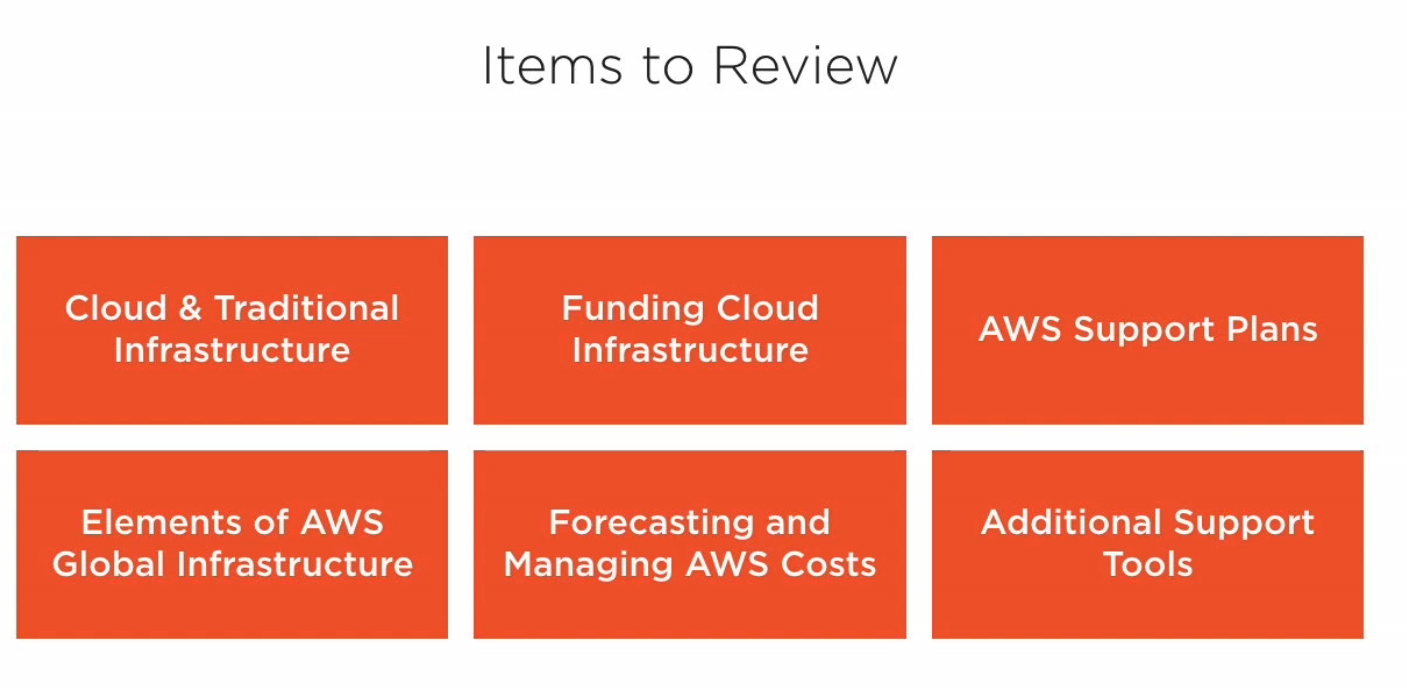Fundamentals
Main topics:
-
Creating an account
-
Examining traditional data center challenges:
- Large up-front investment
- Difficult to predict future traffic or demand
- Slow deploy of new data centers and servers
- Maintain data centers is expensive
- You own all security and compliance burden with all data centers
-
Benefits of cloud computing
- Trade capital expense for variable expenses: you pay what you use
- Scaling
- Stop to guess future needed capacity, traffic
- Speed and agility
- Stop spend money for maintenance
- Go global in minutes. Deploy new data centers in any part of the world
- Elasticity
- Realibility: failover,
- Agility:
- Low cost of trying new business ideas
- Reduces time to maintain infrastructure
- Reduces risk for orgs aroud security and compliance
- Provides access to emerging techs
-
What is cloud computing:
It is the on-demand delivery of compute power, database storage, applications, and other IT resources through a cloud services platform via the internet with pat-as-you-go pricing.
-
Types of clouds
- Iaas you can full/maximun control of your infra
- SaaS you provide a software as a service, you do not worry about infra
- PaaS: Provide a plataform where you put your code and run it.
-
Cloud deployment models:
- Public cloud: such as AWS(pay as you go), GCP
- On-Premises: Private cloud in a private data center
- Hybrid: Use public and on-prem clouds
AWS Global infrastrucute
Three types of infra:
Regions
- It is a specific gographic region
- Each region has a CLUSTER of data center
- AWS has 22 launched regions
Availability Zones
- It is one or more data centers
- One region has Multiple avalability zones
- Minimun: one reqion has minimun two availability zones
- Each availability zone has at least ONE data center
- Therefore, one region has at least two data centers
- Each availability zone is located within the geographical area of the AWS region
- Availability zones have redundant power, netowrking, and connectivity.
- Globaly, there are 69 availability zones
What is availability:
Extent to whcih an application is fulfiling its intended business purpose. Applications that are highly-available are built in a manner where a single failure wont lessen the application’s ability to be fully operational
The first one is availability base on business needs. The second case is 100% availability, high availability
Naming syntax
For example: us-east-2b Where: - us = area - east = sub-area - 2 = Nubmer that identifies the region in that area - b = availabitlity zone
From here: - the REGION NAME = us-east-2 - The availability zone = us-east-2b
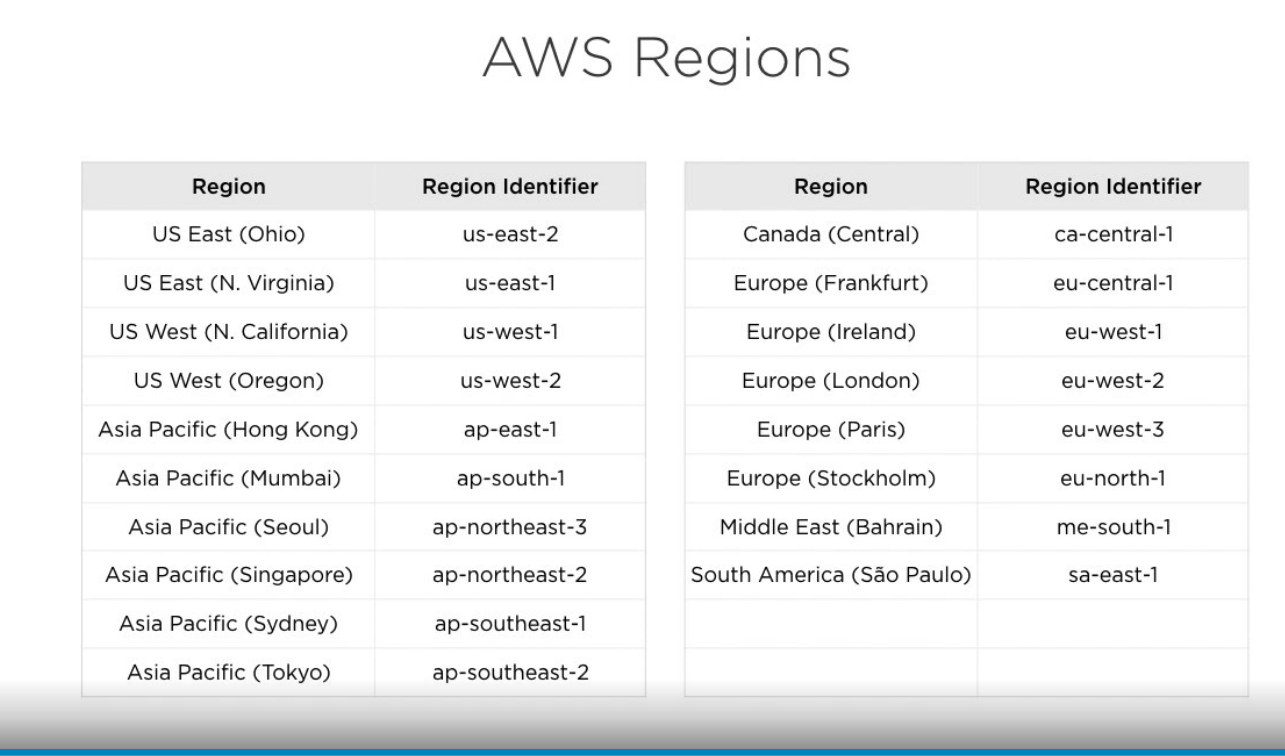
Edge locations
- Part of a global content delivery network CDN
- These support only TWO services:
- Amazon CLoudFront: which is AWS CDN
- Amazon Route 53: which is AWS DNS service
- There are more than 200 different location with edge locations
- It is the most predominant and common infra in AWS
- Edge locations server content from location that are closer to users
In practice
-
The AWs global infra : https://infrastructure.aws/
-
IN this link edge location = points of presence
-
If we need to store or service in multiple geographical areas/regions, then AWS region is needed
-
If the need is to optimize access to user content around the world, then AWS edge loction is needed.
-
If the need is to ensure availability, then AWS availability zones is needed.
Economics
Difference between data center and cloud
Capitalized Expenditure (capEx): When building a data center, an organizatio invests in upfront costs for the building , servers, and supporting equipment. This type of expense to attain a fixed asset is referred to as a Capitalized Expenditure or CapEx
Operating Expenditure( OPEX): The regular day to day expenses of a business are considered Operating Expenditure or OpEx. After the initial build of a data center, ongiong connectivity, utility, and maintencance costs would be considered OpEx.
- The problem with data centers is that at the beginning there is a “unused capacity " and just before increasing the capacity, there is a “demand over capacity” that forces to increase the size of the data centere.
- During the “deman over capacity” many users can not use our service because our infrastrcuture capacite reach its limits.
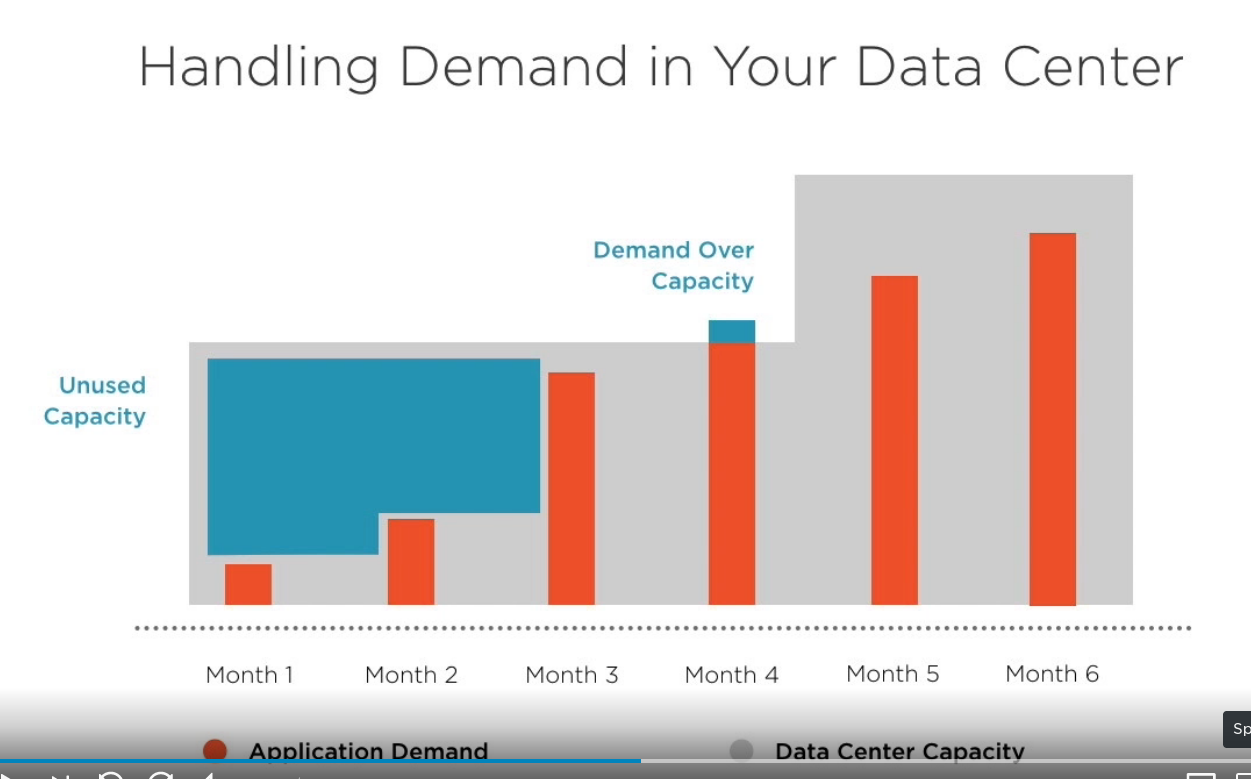
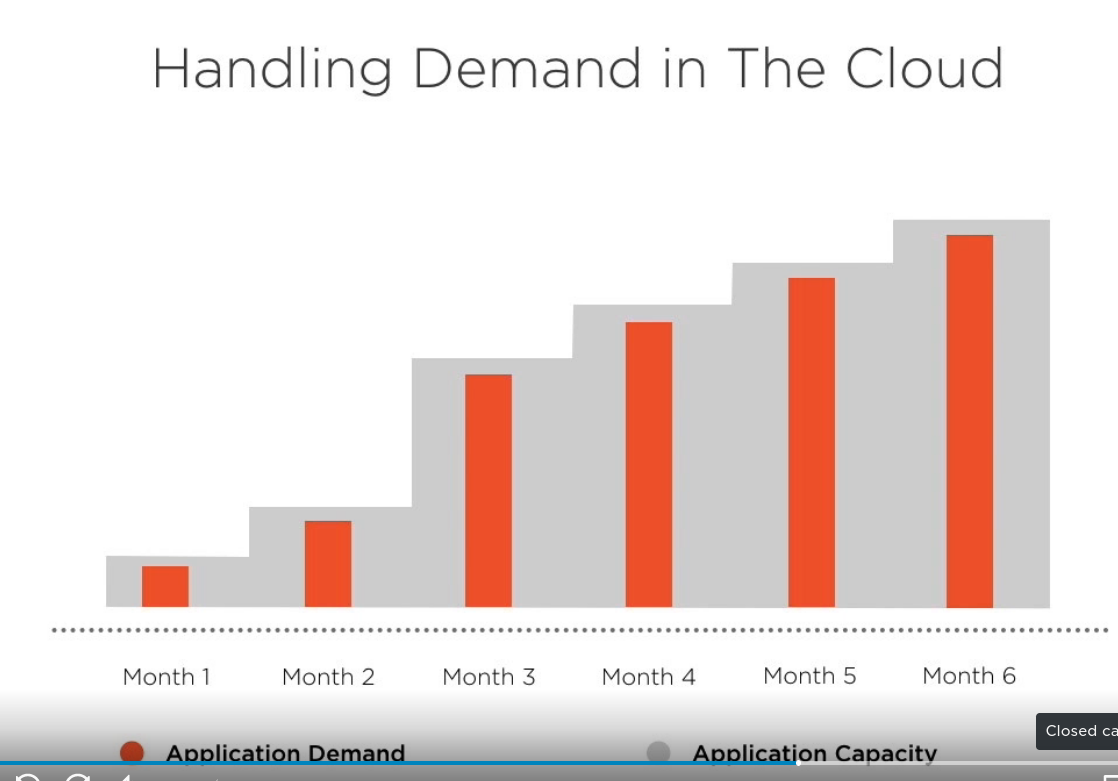
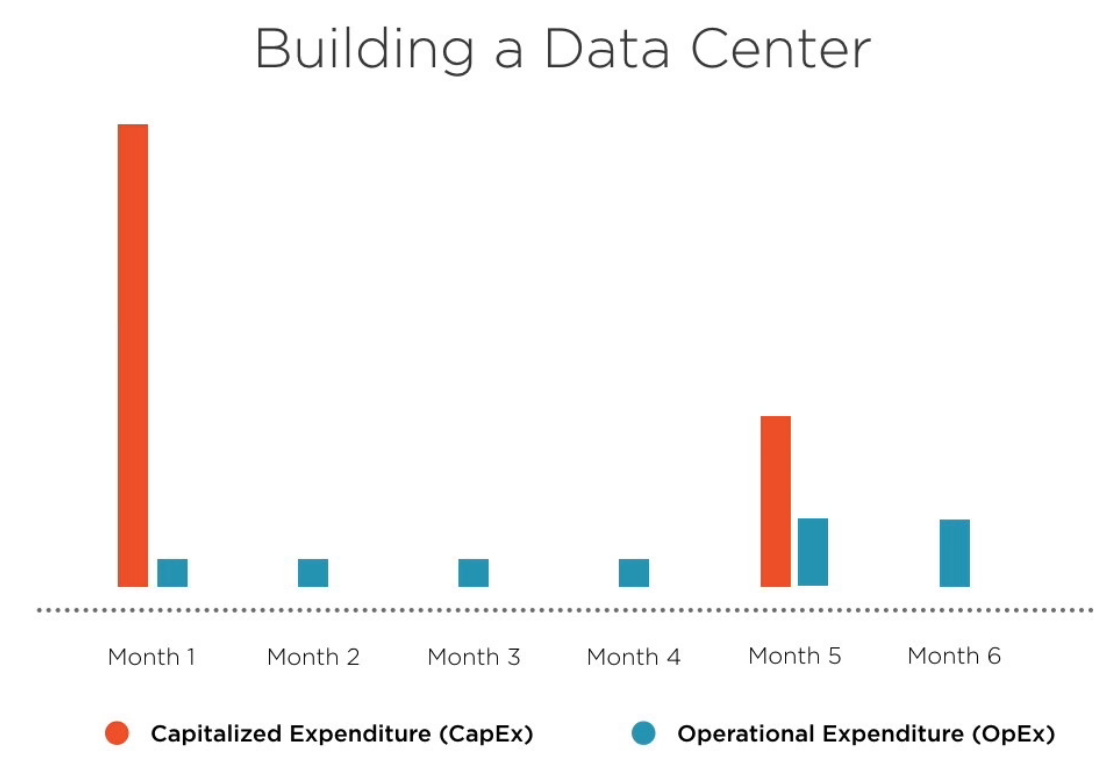
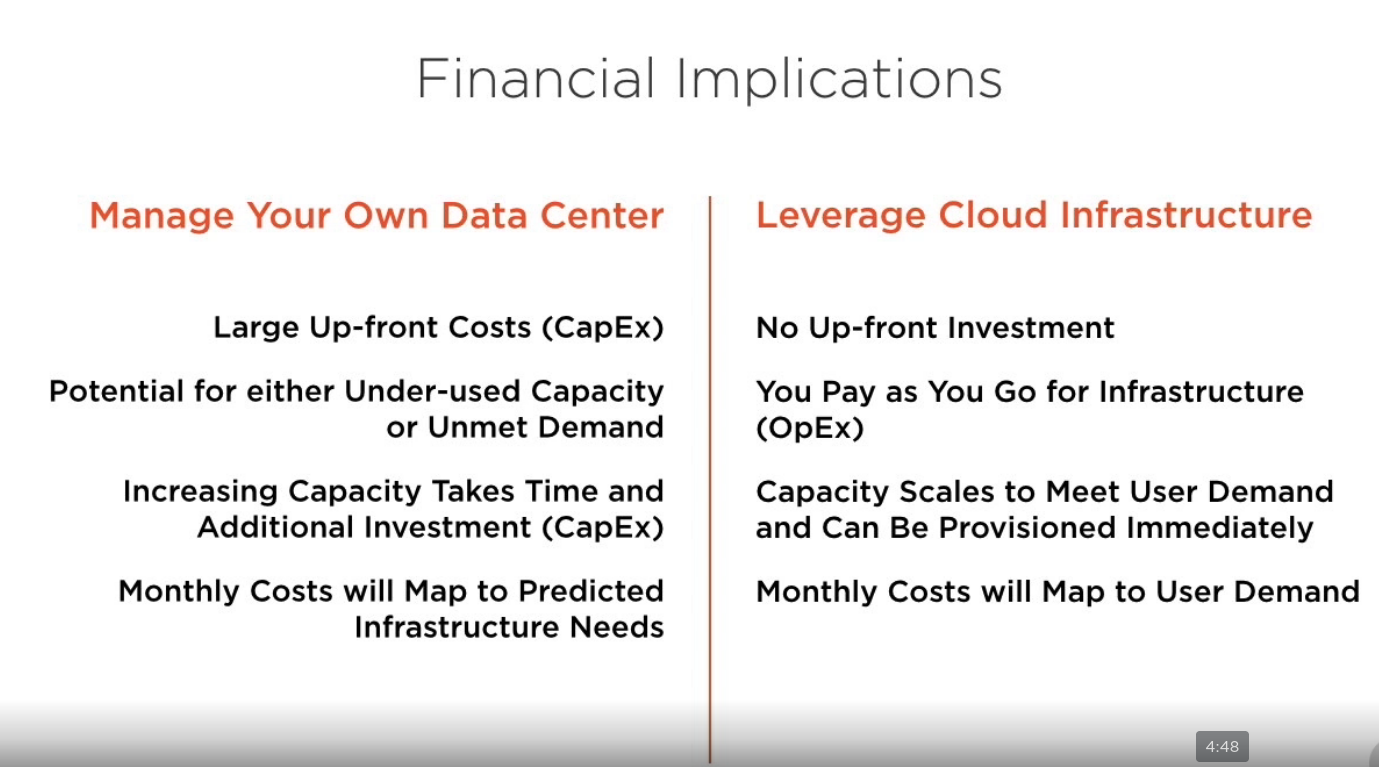
Costs in AWS
-
Use the “AWS cost explorer " tool, an interface for:
- Provides breakdown per service and cost tag
- Provides prediction for next three months of costs
- GIve recommendation for cost optimization
- Get access via API
-
“AWS budgets”: Utilizes data from AWS cost explorer to plan and track your usage across AWS services. It can track cost per serbice , serbice usage, reserved instance utilzization, and coverage, and Saving Pans utilizion and coverage.
-
AWS TCO calculator: Estimates what could be saved by using cloud.
-
AWS Simply Monthly calculator: Estaimtes costs of running specific AWS infra.
-
AWS resource tags:
- Tags are metadata attached to specific AWS resources. For example: webserver tag include all webservers.
- Common uses cases include department, env, or project.
- Tag include a name and a valur
- Costa allocation reports: includes costs grouped by tags
- You can use tags in the AWS explorer
-
AWS organization:
- Allows you to manage many account under one master acount
- It provides a consolidate billing for those account in the organization.
- Enables organizations to centralize logging and security standards across accounts.
AWS TCO calculator
-
TCO = Total cost ownership
-
Compares running your workload in the data center versus in AWS
-
WIth TCO you can:
- Estamate costs for a org to move to the cloud
- Download a summary report
-
Location: awstcocalculator.com
AWS Simple Monthly Calculator
- Estimates the cost of running your workload in AWS, with no comparison
- Link: calculator.s3.amazonaws.com
Cost explorer
-
Login to “console.aws.amazon.com” -> Click in your name -> click " My billing dashboard”. Then Click on “cost explorer” and then “Launch cost explorer”
-
The cost explorer initially shows: current month cost and forecasted month end cost.
-
To get more details in the dashboard, click “Explore costs”
-
You can download CSV file
Scenarios
-
Case 1: company with many departments. Finance is asking to hav a separate costs between departments. Currently all resources are included within a single AWS account.
- IN this case we can use TAGS. Create a tag per department.
-
Case 2: Company think to move to the cloud, but they want to know if this will save them money:
- The solution is use TCO calculator and provide the report to the stakeholders
-
Case 3: Company is trying to know saving costs if they move a web service to the cloud.
- Use Simple MOnthly calculator
Suport AWS infra
- Supporting tools:
-
AWS suuport
- Enables support for AWS resources for workloags running in the cloud
- Provided in different tiers based on need and scope
- Include tools to provide automated answers and recommendations
-
AWS personal health dashboard
Provides alerts and remediation guidance when AWS is experiencing evnts that may impact you. For example,when there will be a outage in your region.
-
AWS tursted advisor
- Check your AWS usage against best practices
- Accessed from AWS console
- Different checks are provided base on the AWS support plan tier
- All AWS customer get access to seven core checks, which include:
- Cost Optimization
- Performance
- Security
- Fault tolerance
- Service Limits
-
AWS Support plan tiers differences:
Main four plans difference includes:
- Communication method
- Response time
- Cost
- Type of guidance offered
Main plans:
-
Basic support:
- To all customers
- Access to trusted advisor ( 7 core checks)
- 24x7 accesss to customer service: docs, forum, and white papers. No engineers
- Access to AWS personal health dashboard
- No monthly cost
-
Developer support:
- Include all from the basic support
- Email access support engineers for business
- Limited to 1 primary contact
- Start at $29 per month, but tied to AWS usage
-
Business support:
- Include all from developer support
- Full set of Trusted Advisor checks
- 24x7 phone, email and chat access support engineers
- Unlimited contacts
- PRovided thrid party software support
- Starts at $100 per month, tied to AWS usage
-
Enterprise support:
- Includes all from business support
- Dedicate technical account manager
- Include a concierge support team
- start from 15000$ per month, tied to AWS usage
There is a importat part called SUPPORT RESPONSE TIME
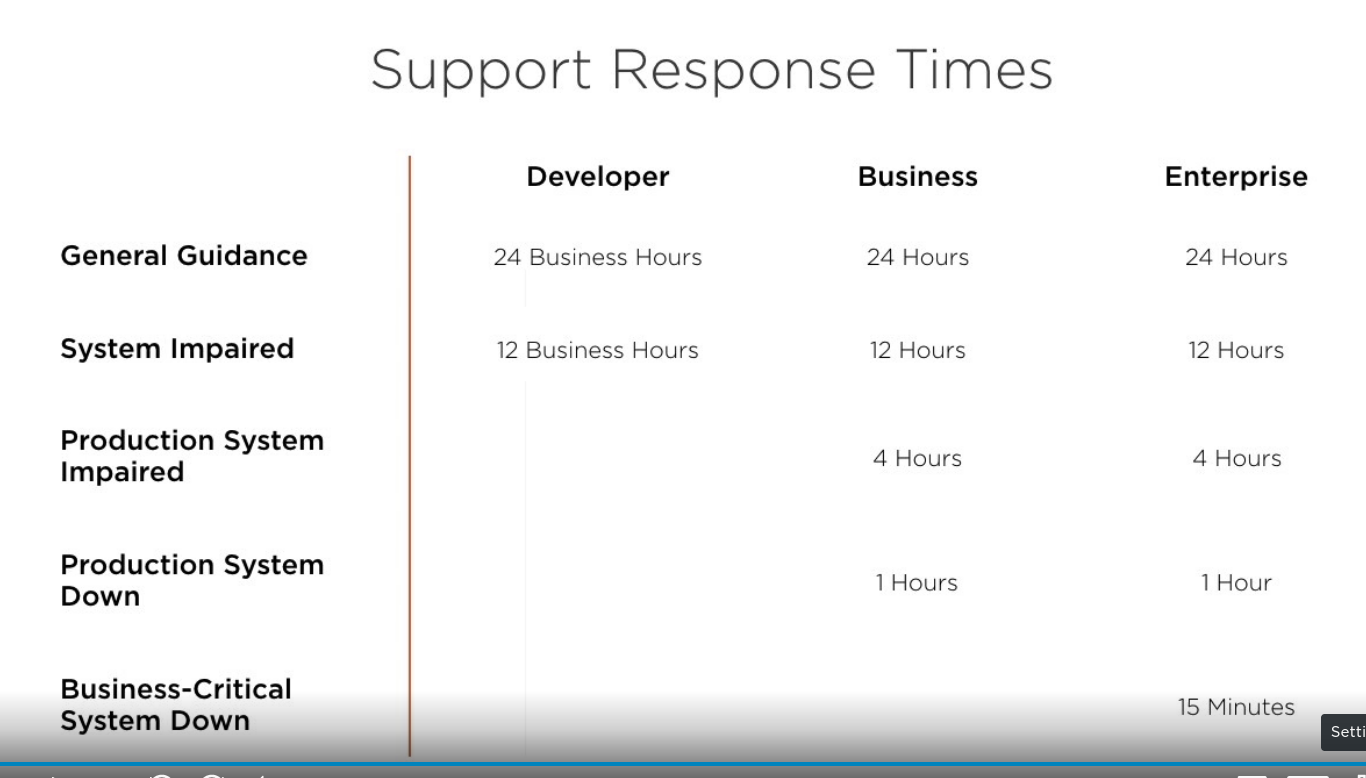
In here we have the following categories:
General guidance = General question to be answer System impaired = when somethng is not working as it should Production system impaired = Production system that is not performing at its desired capacity. Production system down = Production system that is completely un-functinal Business-critical system down = Core system for an organization that is completly non functional
Trusted advisor tool
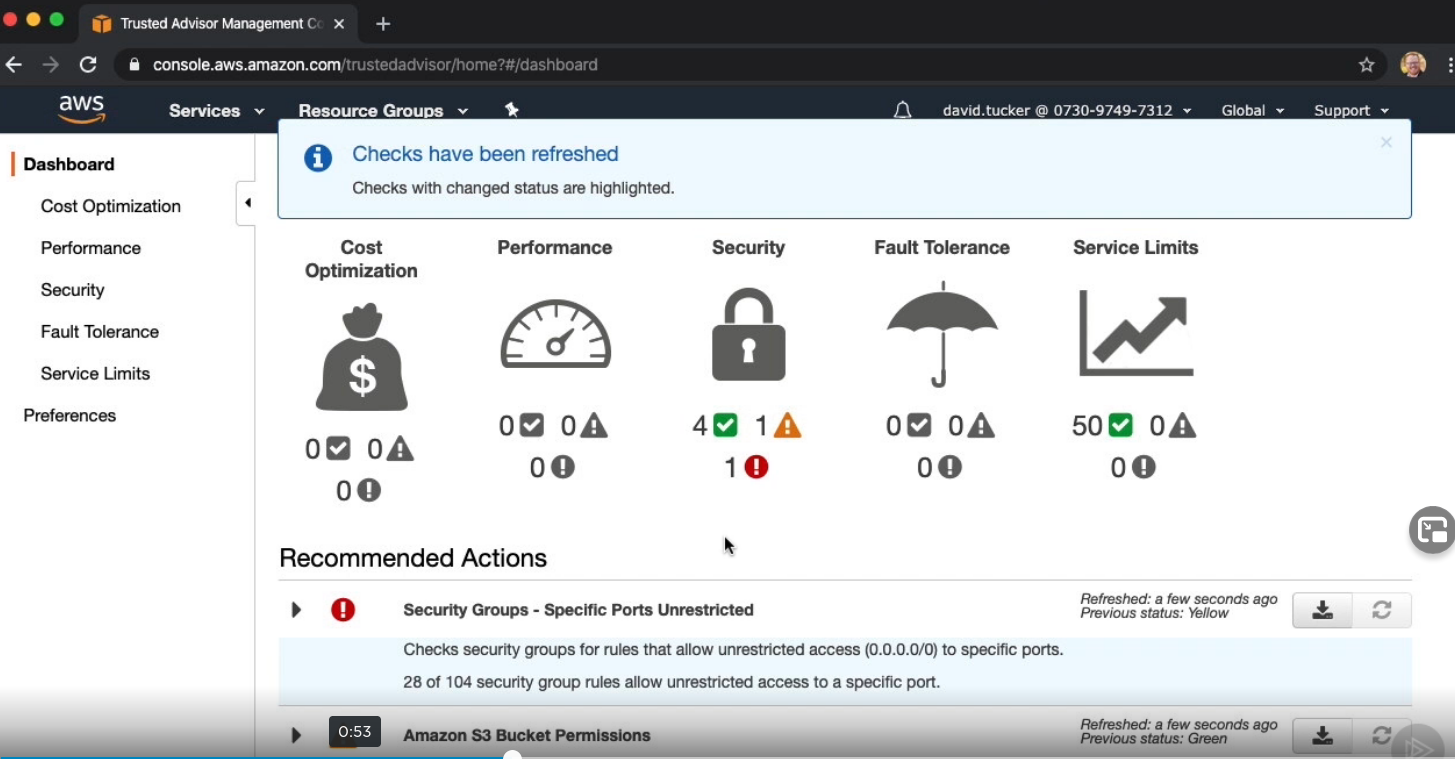
- LInk: consoel.aws.amazon.com
- Review recommendations
- Type “trsuted advisor” in “find SERvices2
Personal health dashboard
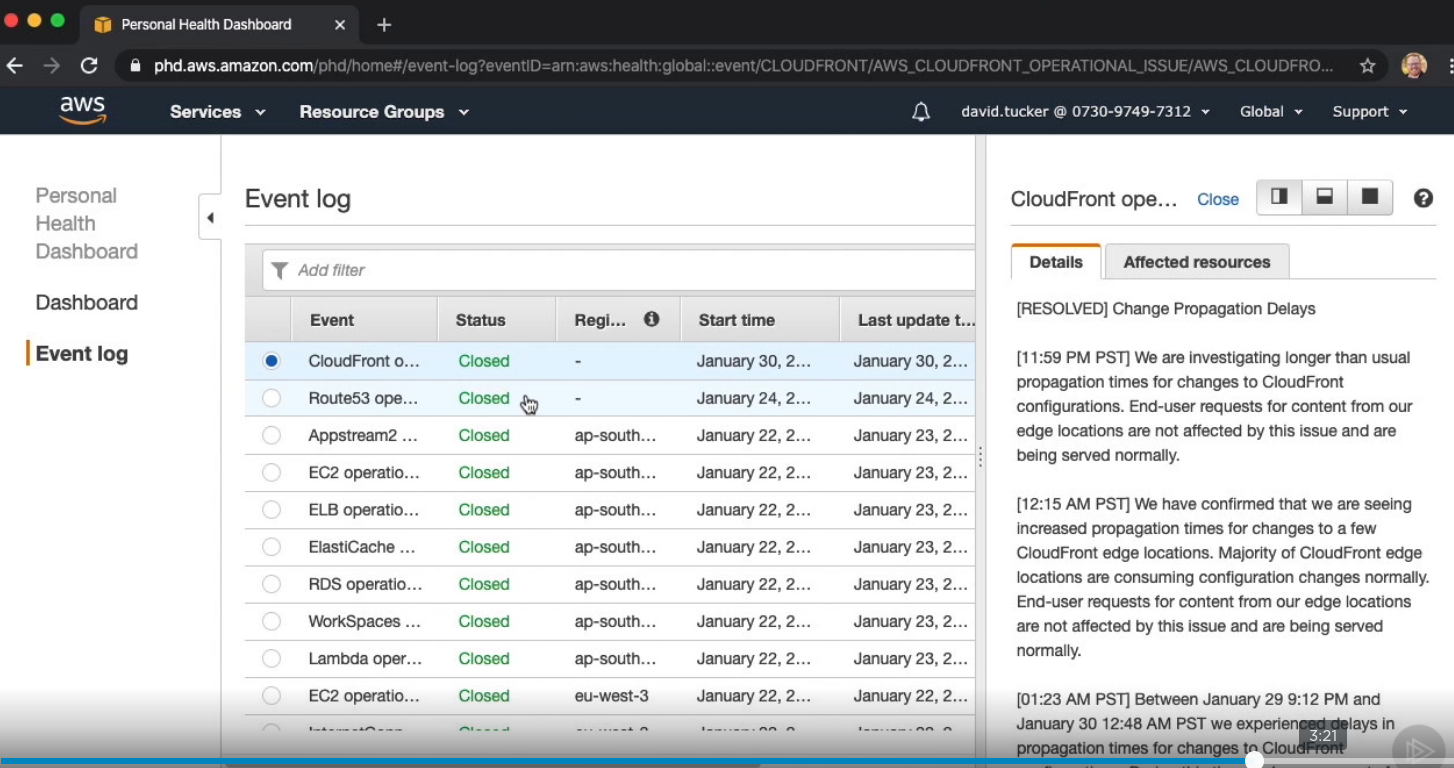
Infra support scenarios
- case 1: One workload is cirtical and requirest 24 hours call support a day.
- The most effective criteria is Business support
- case 2: The company needs to be able to call , text and email support if an issue occurs. Also needs response from support within 15 minutes.
- Here applies: Enterprise support
- Case 3: a developer does not need technical support, and he has access to trusted advisor core checks.
- Here Basic support is enough
Review
